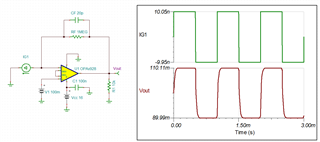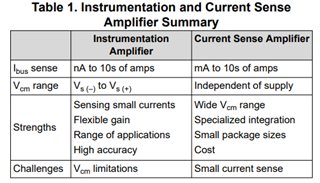I have a low current measurement application, for which I'm thinking about using a TI current sense amplifier (or simply an op-amp, but I've recently learned why that may not be prudent). I need help selecting the correct product based on my experimental setup.
We are using a Keithley 6430 high precision SMU to source voltage across a very high resistance DUT. The DUT, comprised of dipolar organic chromophores sandwiched between doped silicon conducting rails, is essentially a variably "leaky" capacitor, which passes more current as the material is heated above its glass transition temperature. The preparation of such devices requires a constant poling field, supplied by, alternately, the aforementioned SMU and a standard power supply. Our measurement circuit involves electromechanical switching between the voltage sources, and we would like to be able to use our oscilloscope to see the resulting current response. Because the source voltage has to remain around 15 V, and the DUT resistance is in the hundreds of GOhm, we end up with currents on the order of 10s of pA at steady state, to 10ish nA as a response to the pulsing "voltage steps."
In order to see this low level current response, faster than the SMU can log in its buffer, we need a high precision op-amp to convert it to an appropriate amplitude voltage signal to input to our scope. The existing measurement circuit lends itself more favorably to a low-side sensing scheme, but a new one could be constructed if this community thinks high-side sensing is a better route, based on the experiment I've described. Bi-directional current sensing is preferred, and the ability to offset the output to center the response would be beneficial. The scope input sensitivity is about 1 mV/div, so we'd ideally like to see hundreds of mV to a couple V at the amplifier output.
I am completely new to analog circuit engineering, and this is my first time having to crowdsource from a pool of engineers who know better, instead of dealing one-on-one with an AE. Hopefully the information I've provided is a good enough starting point.





